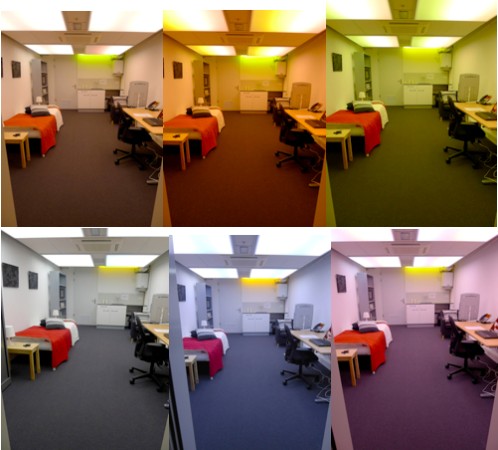
Light@Work: The impact of the dynamics of light exposure on alertness and sleep in humans
Domien Beersma (RuG)
Marijke Gordijn (RuG)
Maan van de Werken (RuG)
Tom Woelders (RuG)
The non-visual effects of lights in humans are substantial. No matter time of day, sustaining high levels of alertness and performance is much more difficult under dim light conditions than in bright light. Furthermore, higher levels of light during the day have been shown to improve sleep during the night. Recent data imply that intrinsically photosensitive retinal ganglion cells (ipRGCs) play a prominent role in the underlying regulatory mechanisms. These cells, however, do not only respond to the light they perceive themselves, but they also receive input from rods and cones. Because rods and cones have spectral properties different from the ipRGCs, current research focuses on how spectral properties of light exposure influence the downstream processes.
Rods and cones do, however, not only differ from the ipRGCs in terms of spectral sensitivity, but also in terms of response dynamics. Adaptation processes are much faster in the classical photoreceptors. In this project, we want to investigate the impact of these differences in adaptation speed for the non-visual effects, and study the effects of light exposure varied dynamically in intensity and color composition. Scientifically we want to unravel the contributions of the various types of photoreceptor cells and how they interact to produce observed effects on alertness and sleep. For society we want to quantify the effects of dynamical fluctuations in light intensity and color on alertness, both in everyday life and during daytime and night shift working hours.
While dynamic lighting equipment is increasingly installed by various companies, studies like the one we propose here are badly needed to optimize the characteristics of dynamic lighting with respect to alertness and sleep. Finally the proposed schemes will be tested in real life night shift settings, where effects on alertness, performance, comfort and well being will be investigated.


